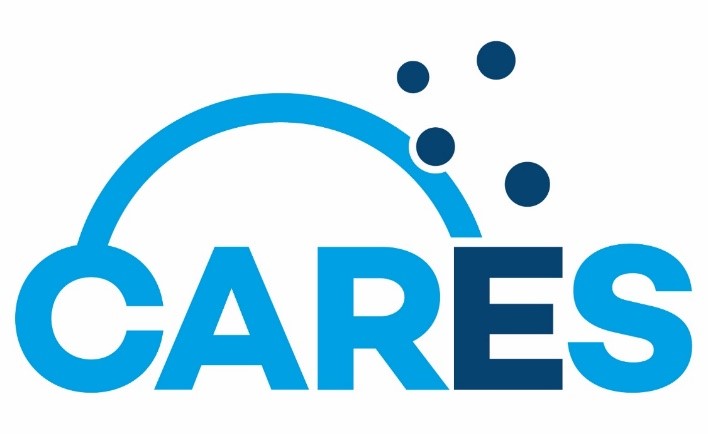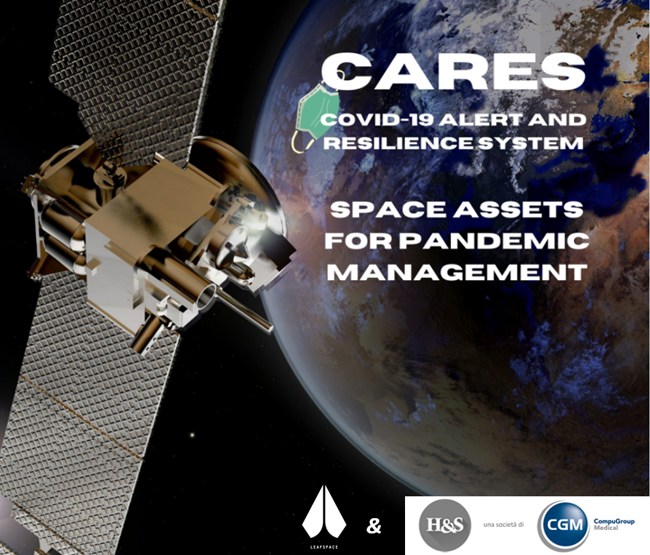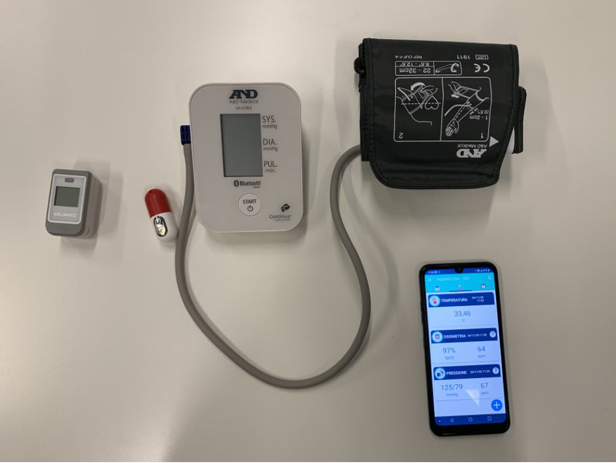
Objectives of the service

The CARES service addresses the challenges faced by whoever must deal with the current pandemic caused by the COVID19 outbreak, offering a solution to remotely monitor the health condition of patients quarantined at home.
The utilization of the CARES service contributes to:
- Decrease the exposure of medical personnel to contamination sources, by allowing health professionals to be virtually "close to patients", without direct physical contact with them.
- Limit the exposure of patients to the hospital environment (shorter or no visits), which also reduces the saturation of these infrastructures.
- Reduce or avoids movements of equipment and people (medical personnel and patients).
- Increase the number of patients who can be monitored more effectively by the same medical personnel, saving time and resources.
- Provide continuous monitoring of medical conditions
- Provide psychological support to Covid-19 positive patients in quarantine via regular interactions with medical professionals.
- Promote the utilisation of Telemedicine in the medical ecosystem.
Users and their needs
The key user segments targeted by the CARES service are:
- Healthcare professionals working in public and private Health organizations;
- General practitioners (Family Doctors);
Medical authorities are interested in:
- Patients’ health conditions
- Healing course
- Post-infection medical history.
The CARES service can offer a better protection of the medical personnel, decrease the need for personal protection equipment and allow for a quick monitoring of geographically dispersed patients.
As a result, CARES can contribute to support the national healthcare system to cope with the negative impacts of the COVID19. The Coronavirus pandemic has indeed been stressing the resilience and the effectiveness of the health response nationally and saturating the capacity of hospitals.
The following interested users were involved in the CARES field trials:
- Regione Lombardia, (regional government);
- ISS (Istituto Superiore di Sanità), body of the Ministry of Health;
- Azienda Sanitaria Universitaria Giuliano Isontina, Italy;
- Azienda Servizi Persona Cosenza, Italy;
Service/ system concept
The CARES service offers doctors the access to the needed medical data at the click of a mouse, directly from their workplace, without the need of moving to patients’ location. The system relies on a telemedicine platform placed at a patient’s house which collects vitals data and transmits this data to a collection centre twice per day. The doctors can access this collection centre to monitor the healing course of the patient via a simple web interface directly from the place of work.
This system is designed to collect data on a large geographical scale and is used (in this version) as a concept demonstrator to experiment procedures and methods to be adopted now and in the future development of the pandemic. The concept can easily be applied to manage large number of people on wide areas, to the ideal extreme of a full country’s population. This all depends on the number of Healthcare platforms deployed on the territory.
CARES is based on the use of an integrated hybrid communication system mixing terrestrial (cellular networks and cable internet) and satellite communication. This approach allows the CARES service to be reliable and to have a large coverage anywhere in the world, from big urban areas to remote locations not covered by the ground communication network.
The main building blocks of the healthcare monitoring system include:
- The HMCU = Health Monitoring & Communication Unit. This device is the main data generator; each quarantined patient in the program will have a HMCU installed at home on which he/she will monitor vital parameters twice per day.
- The DCP&D = Data Collection Processing & Distribution. Once the vital parameters have been collected the DCP&D analyses the vitals and warns the doctors with an alarm, if necessary
The CARES solution relies on the utilisation of:
- a SATCOM system based on a geostationary satellite (Thuraya-2), which always keep its position in the sky by orbiting around the earth at its exact pace. In this way the coverage provided by the satellite is always available
- GPRS communication network. When available, the standard GPRS network can provide a reliable communication mean to reach the DCP&D.

The main nodes of the CARES monitoring system include:
- HMCU = Health Monitoring & Communication Unit. This device is the main data generator; each quarantined patient has a HMCU installed at home to monitor vital parameters twice per day.
- A SATCOM system based on a geostationary satellite (Thuraya-2), which always keep its position in the sky by orbiting around the earth at its exact pace. In this way the coverage provided by the satellite is always available
- DCP&D = Data Collection Processing & Distribution. Once the vital parameters have been collected the DCP&D analyses the vitals and warns the doctors with an alarm, if necessary
- GPRS communication network. When available, the standard GPRS network can provide a reliable communication mean to reach the DCP&D.


Space Added Value
The added value of satellite connection to medical telemonitoring is meant to overcome any connectivity constraint may exist in any territory. The goal of this service is to connect patients and medics so that the medical authorities manage the workload and the challenges of a pandemic, no matter the location. After a few months, the pandemic has reached millions of people and remote areas where standard communication systems may not be sufficient to ensure equal access to care.
CARES is enabling medical telemonitoring everywhere, also where:
- no terrestrial communication infrastructure has been deployed yet.
- local cellular networks are not reliable
SATCOM also allows the CARES service to support other possible use cases where terrestrial infrastructures have been locally or totally disrupted (e.g. wars, natural disasters)
Current Status
The project started on 1 July 2020. While the development and testing stages of the projects went very smoothly, it has been very difficult to gain sufficient traction from the pilot users to ensure a proper trial and service validation. While the CARES service most often triggered some interest among the (operational) medical personnel contacted, the project was less attractive to department managers during a pandemic situation. As a result, no trials could be performed during the project time. However, the CARES project team produced a detailed report on lessons leant, which can potentially be used for offering CARES as a solution for other uses cases. The Final Review meeting took place on 13 December 2021.




